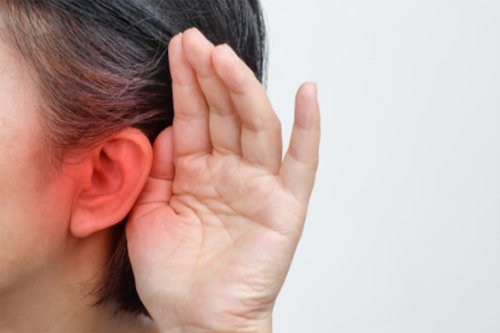Brain and ENT Clinic – Dr Lalit Mahajan In Nagpur & Dr Rachna Gangwani Mahajan In Nagpur
Deafness

Deafness refers to a significant hearing impairment or the complete inability to hear. It can be either congenital (present at birth) or acquired (developed later in life). The degree of deafness can vary widely, and it is often categorized into different levels based on the extent of hearing loss.
Deafness can profoundly impact communication, language development, education, and overall quality of life. However, many individuals with deafness or hearing impairment use various methods to communicate, including sign language, lip-reading, and assistive devices such as hearing aids or cochlear implants. With appropriate support and accommodations, many people with deafness lead fulfilling and successful lives.
Symptoms of Deafness
Difficulty Hearing:
- Difficulty understanding speech, especially in noisy environments.
- Struggling to hear sounds at a normal volume.
Speech and Language Delays:
- Delayed development of speech and language skills in children.
Social and Communication Challenges:
- Difficulty following conversations, leading to social isolation.
- Misunderstanding spoken information, which can lead to communication breakdowns.
Volume-Dependent Behavior:
- Frequently asking others to speak louder or repeat themselves.
Struggling with Phone Conversations:
- Difficulty hearing over the phone.
Changes in Academic Performance:
- Children with hearing loss may experience challenges in academic settings.
Tinnitus:
- Ringing, buzzing, or other noises in the ears, which may accompany hearing loss.
Sensitivity to Loud Sounds:
- Discomfort or pain in response to loud noises.
Methods and interventions for Managing Deafness
- Hearing Aids:
- Hearing aids are devices designed to amplify sound, making it easier for individuals with hearing loss to hear and communicate. They are commonly used for mild to moderate hearing loss.
- Cochlear Implants:
- Cochlear implants are electronic devices that are surgically implanted into the inner ear to stimulate the auditory nerve directly. They are often used for individuals with severe to profound hearing loss who do not benefit significantly from hearing aids.
- Assistive Listening Devices (ALDs):
- ALDs include devices such as FM systems, loop systems, and infrared systems that can enhance sound in specific environments, like classrooms or theaters.
- Communication Training:
- Speech therapy and communication training can help individuals with hearing loss develop or improve their speech and language skills. This is particularly important for children with hearing loss.
- Sign Language:
- For individuals with profound deafness or those who find it challenging to use spoken language, sign language (such as American Sign Language or British Sign Language) can be a valuable means of communication.
-
Medical Treatment:
- In cases where hearing loss is caused by a treatable medical condition, such as an ear infection or impacted earwax, medical treatment may resolve the issue.
- Surgery:
- Surgical procedures may be recommended for certain types of hearing loss or conditions affecting the ear, such as the placement of ear tubes or surgical correction of anatomical abnormalities.
